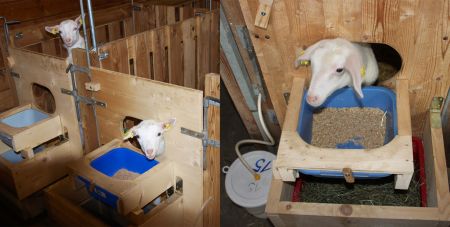By determining the individual feed intake throughout the entire production process (from the fawn/lamb to the end of the 4th lactation of the goat/sheep) as well as the milk production, the nutrient expenditure of milk production can be calculated depending on the animal species and feed level (proportion of concentrated feed). The results can be used to calculate the costs and efficiency of milk production at many reference levels, namely per kg of milk, per kg of live weight, per nutrient unit of feed, per day of life and per unit of area.
Another goal is to examine milk quality. Basic feed base and amount of concentrated feed as well as the animal species influence the fatty acid pattern in animal products. Basic feed rations increase the nutritionally valuable unsaturated fatty acids in milk and meat (CLA and Omega-3). These two fatty acid groups have a positive effect on human health in the following areas: cardiovascular diseases (lower blood lipids), skin diseases (e.g. neurodermatitis), rheumatism, anti-inflammatory, anticarcinogenic, antidiabetogenic, anabolic, antithrombotic and antiarteriosclerotic effects.
The experimental plan (different animal species and feed levels) results in a wide range of effort/return ratios, which also allow basic evaluations from an economic perspective.
These very different effort/return ratios also lead to significantly varying ecological conditions. Under typical Austrian production conditions, the amount of concentrated feed in particular represents an import of nutrients into the farm and influences the ecological balance. In addition, the differences between the laboratory animals also mean different efficiency of nutrient utilization, which has an impact on the environment. Here too, model calculations are used based on fully recorded production data from the test.
Ultimately, the aim of this project is to compare the efficiency of milk production by sheep and goats with that of cows.







